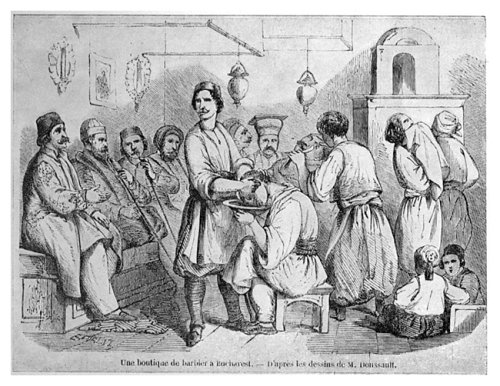infandous
adj. too horrible to mention
Elmer McCurdy
In December 1976, the television program The Six Million Dollar Man was shooting an episode at California’s Long Beach Pike amusement park when a crew member discovered a wax dummy hanging in a funhouse gallows. When he tried to move it, its arm broke off — it wasn’t a dummy, but in fact a mummified human body. Stranger still, its mouth contained a 1924 penny and a ticket from the Museum of Crime in Los Angeles.
After much investigation, it turned out to be the body of Elmer McCurdy, an inept outlaw who had been killed in an Oklahoma gunfight in 1911. When no one claimed his body, an unscrupulous undertaker had embalmed it and charged a nickel to see “The Bandit Who Wouldn’t Give Up,” and for 60 years thereafter McCurdy’s corpse was traded among wax museums, carnivals, and haunted houses.
Elmer was finally buried, fittingly, in the Boot Hill section of Oklahoma’s Summit View Cemetery under two cubic yards of concrete. Ironically, his last words had been “You’ll never take me alive!”
Warm Words

It is said that, when Charles Dudley Warner was the editor of the ‘Hartford Press,’ back in the ‘sixties,’ arousing the patriotism of the State with his vigorous appeals, one of the type-setters came in from the composing-room, and, planting himself before the editor, said: ‘Well, Mr. Warner, I’ve decided to enlist in the army.’ With mingled sensations of pride and responsibility, Mr. Warner replied encouragingly that he was glad to see the man felt the call of duty. ‘Oh, it isn’t that,’ said the truthful compositor, ‘but I’d rather be shot than try to set any more of your damned copy.’
— John Wilson, “The Importance of the Proof-Reader,” 1901
Rimshot

Three men are stranded on a desert island when a bottle washes up on the shore. When they uncork the bottle, a genie appears and offers each a wish.
The first man wishes he were in Paris. The genie snaps his fingers, and the man instantly disappears.
The second man wishes he were in Hollywood, and at a snap of the genie’s fingers, he too vanishes.
The third man, now alone on the island, looks around and says, “I wish my friends were back.”
Skill Sets
Discontinued merit badges:
- Clerk (1911)
- Horseman (1911)
- Seaman (1911)
- Mining (1937)
- Airplane Design (1952)
- Blacksmithing (1952)
- Cement Work (1952)
- Foundry Practice (1952)
- Soil Management (1952)
- Stalking (!) (1952)
- Wood Turning (1952)
- Farm Home and Its Planning (1959)
- Dairying (1975)
- Pigeon Raising (1980)
- Rabbit Raising (1993)
- Agribusiness (1995)
- Beekeeping (1995)
What did the Boy Scout say when he’d fixed the pager? “Beep repaired.”
Unquote

“Beware of the young doctor and the old barber.” — Benjamin Franklin
“Longevity of a Hawk”

In the beginning of September 1792, a paragraph appeared in several newspapers, mentioning that a hawk had been found at the Cape of Good Hope, and brought from thence by one of the India ships, having on its neck a gold collar, on which were engraven the following words:
“This goodlie Hawk doth belong to his Most Excellent Majestie, James Kinge of England, A.D. 1610.”
— Kirby’s Wonderful and Scientific Museum, 1820
Math Notes
(27/8)9/4 = (9/4)27/8
Tons of Atmosphere

You’d do well to avoid Lake Nyos, which sits in a crater on the flank of a Cameroonian volcano. In 1986, like a shaken soft drink can, it suddenly released 80 million cubic meters of carbon dioxide, which rushed down nearby valleys and suffocated 1,800 people and 3,500 livestock where they stood.
It’s not known what caused the eruption, but it turned the lake a deep red.
In Other News
Ten human skeletons have been discovered at Fattey Llyn, near Llandebie, at a depth of thirty feet from the surface of a limestone rock. The skulls are of a very uncommon size and thickness, and all the bones are of a larger calibre than those of the present race of men.
— Edinburgh Star, Aug. 27, 1813
